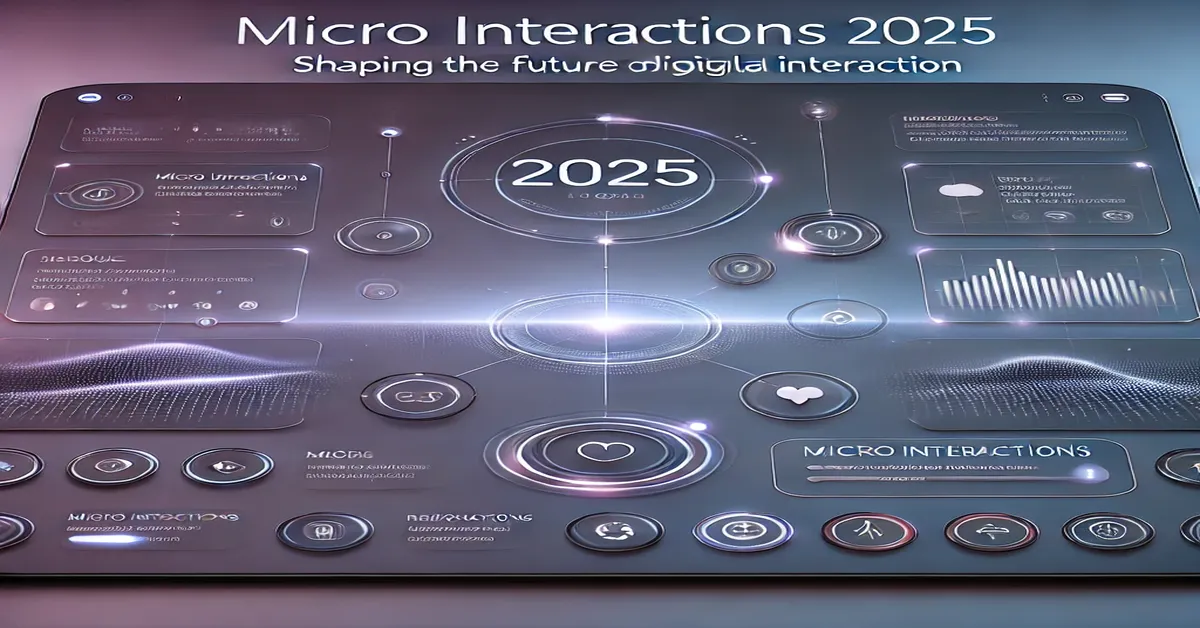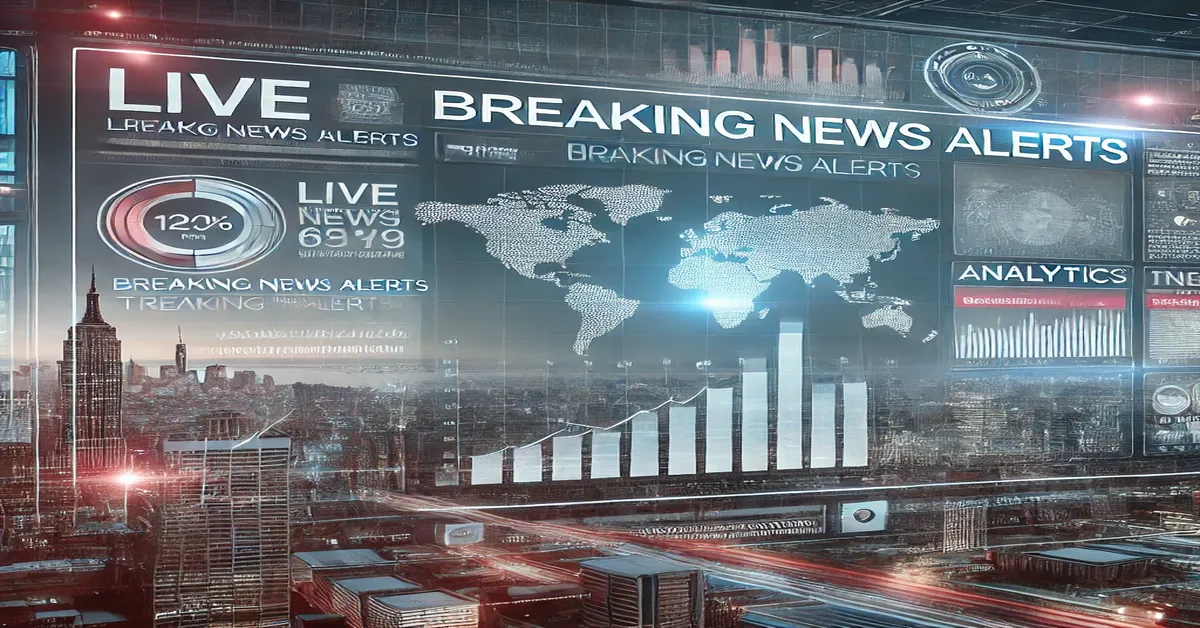In our everyday lives we’re surrounded by tiny, almost invisible interactions that we rarely pause to appreciate. Consider your morning routine the subtle pop of the toaster when your bread is ready, the reassuring whistling of the kettle when the water boils, or the precise ping of the egg timer signaling that your eggs are cooked just right. These Micro Interactions 2025, though seemingly minor, play a crucial role in our daily experiences, guiding and informing us seamlessly.
In the digital world, micro interactions are just as vital. They enhance user experiences on websites and apps, providing feedback, engagement, and satisfaction from even the smallest tasks. As we look towards the future, specifically 2025, the role of micro interactions is set to become even more significant. With over 1.5 billion websites competing for attention, ensuring that your digital platform stands out is crucial. Enter micro interactions—those subtle yet powerful elements that could make all the difference.
In this article, we’ll delve into what micro interactions are, how they impact user experience, and what to expect from them in 2025. Whether you’re a designer, developer, or just someone curious about the future of digital interaction, understanding micro interactions will help you stay ahead of the curve.
What Are Micro Interactions?
Micro interactions are small, contained moments within a user experience that provide feedback, guide actions, or create a more engaging interface. They are the tiny details that make interactions with technology feel more intuitive and human.
Think of them as the subtle touches that enhance the usability and enjoyment of a digital product. They might not be immediately noticeable, but they contribute significantly to the overall user experience. Here are some examples of micro interactions in digital design:
- Button Animations: A button that changes color or slightly enlarges when hovered over or clicked.
- Loading Indicators: A spinning wheel or progress bar that informs users that their request is being processed.
- Notifications: A small pop-up or badge indicating that a new message or alert has arrived.
- Form Feedback: Error messages or success notifications that appear when users fill out forms.
These micro interactions provide essential feedback and improve the usability of digital interfaces by making them more responsive and engaging.
The Importance of Micro Interactions
Micro interactions may seem trivial, but they have a significant impact on user experience and satisfaction. Here’s why they are crucial:
1. Enhanced User Engagement
Micro interactions keep users engaged by providing immediate feedback and visual cues. For instance, a subtle animation when a user submits a form not only reassures them that their action was successful but also makes the experience more enjoyable. Engaging micro interactions can make your website or app feel more dynamic and responsive, encouraging users to stay longer and explore more.
2. Improved Usability
Good micro interactions can greatly enhance the usability of a digital product. They guide users through processes, highlight important information, and help prevent errors. For example, if a user tries to enter an invalid email address into a form, an immediate, clear error message will help them correct the mistake and move on seamlessly.
3. Feedback and Confirmation
Micro interactions provide users with feedback and confirmation that their actions have been recognized. This is especially important in interactive elements such as buttons, sliders, or toggles. For instance, a brief animation that shows a message was sent successfully can reassure users that their action was completed as intended.
4. Emotional Connection
Micro interactions can also create an emotional connection between users and a digital product. Thoughtfully designed animations or sounds can evoke positive feelings and make the user experience more enjoyable. This emotional engagement can contribute to increased user satisfaction and loyalty.
Micro Interactions in 2025: What to Expect
As we look ahead to 2025, the landscape of micro interactions is expected to evolve in several exciting ways. Here are some trends and innovations to watch for:
1. Advanced Animations and Transitions
The future of micro interactions will likely see even more sophisticated animations and transitions. As technology advances, designers will have access to more powerful tools and techniques for creating smooth, visually appealing animations. These enhanced animations will make interactions feel more fluid and natural, further enhancing user experience.
2. Personalization and Customization
Micro interactions in 2025 are expected to become increasingly personalized. With advancements in artificial intelligence and machine learning, digital platforms will be able to tailor interactions to individual users based on their preferences and behavior. This could include personalized feedback messages, custom animations, or adaptive interfaces that change based on user context.
3. Voice and Gesture Controls
As voice and gesture recognition technology continues to improve, micro interactions will expand beyond traditional touch-based interfaces. Expect to see more voice-activated commands and gesture-based controls integrated into digital platforms. These interactions will provide users with a more intuitive and hands-free way to engage with technology.
4. Immersive Experiences with AR/VR
Augmented Reality (AR) and Virtual Reality (VR) will bring new dimensions to micro interactions. In AR and VR environments, micro interactions will play a crucial role in guiding users, providing feedback, and creating immersive experiences. From virtual buttons that respond to gestures to interactive elements within a virtual space, the possibilities are endless.
5. Contextual and Adaptive Feedback
In the future, micro interactions will be more contextually aware and adaptive. Digital platforms will be able to provide feedback and interactions based on the user’s current situation, environment, and needs. For example, a navigation app might offer different feedback based on whether a user is walking or driving, enhancing the relevance and usefulness of the interactions.
Implementing Effective Micro Interactions
To make the most of micro interactions, it’s important to implement them thoughtfully and strategically. Here are some tips for creating effective micro interactions:
1. Keep It Simple
Micro interactions should be subtle and unobtrusive. Avoid overwhelming users with excessive animations or complex interactions. Instead, focus on simplicity and clarity. Each micro interaction should have a clear purpose and enhance the overall user experience.
2. Prioritize Usability
Ensure that micro interactions improve usability and guide users effectively. Test interactions to make sure they provide clear feedback and enhance the user journey. For example, a loading indicator should clearly show the progress of a task and prevent users from becoming frustrated.
3. Maintain Consistency
Consistency is key to creating a cohesive user experience. Use consistent design patterns, animations, and feedback mechanisms throughout your platform. This helps users become familiar with interactions and understand their meaning.
4. Consider Accessibility
Make sure that micro interactions are accessible to all users, including those with disabilities. Provide alternative feedback mechanisms for users who may have difficulty seeing or hearing visual and auditory cues.
5. Test and Iterate
Regularly test and iterate on micro interactions to ensure they meet user needs and expectations. Gather feedback from users and analyze how interactions impact their experience. Use this information to refine and improve interactions over time.
Conclusion
As we approach 2025, micro interactions will continue to play a vital role in shaping user experiences. The advancements in technology and design will open up new possibilities for creating engaging, intuitive, and personalized interactions. By staying informed about emerging trends and best practices, you can ensure that your digital platforms remain at the forefront of innovation.
Whether you’re a designer, developer, or digital enthusiast, embracing the potential of micro interactions will help you create more meaningful and impactful experiences. As technology evolves, so too will the ways we interact with it. Micro interactions are a small but powerful aspect of this evolution, offering endless opportunities for enhancing the way we engage with the digital world.















